The ASRock X870 LiveMixer Wifi motherboard, similar to its B850 LiveMixer counterpart ($189.99), is engineered with content creators in mind, offering extensive connectivity for streaming and various peripherals. The X870 model delivers enhanced, faster connectivity, benefiting not only creators but also a wider range of users. Its black-on-silver aesthetic mirrors that of the B850 version we reviewed, and looks good with a wide variety of build themes. Overall, it's a viable budget option for those who require abundant USB ports and other expansion options.
For $229.99, the LiveMixer gets you a whopping sixteen USB ports on the rear IO (13x Type-A, 3x Type-C). If this isn’t enough for 99% of those reading this, I’d be surprised. You’re not going to find a board from this generation with more ports on the rear IO. Content Creators often use capture cards and other PCIe expansion cards, so having two free slots in addition to the primary graphics slot is also useful. On top of that, you get fast networking (5 GbE and Wi-Fi 7, though only 160 Hz), a flagship-class audio codec, capable power delivery, and ample storage options (though a lot of that bandwidth is shared, which we’ll touch on later). For under $230, this is a capable and well-rounded solution in terms of hardware.
Below, we’ll examine the board's details and determine whether it deserves a spot on our Best Motherboards list. But before we look at test results and discuss the details, check out the specifications below, provided by ASRock.
Specifications of the ASRock X870 LiveMixer Wifi
Swipe to scroll horizontally
Socket | AM5 (LGA 1718) |
Chipset | X870 |
Form Factor | ATX |
Voltage Regulator | 19 Phase (16x 80A Dr MOS MOSFETs for Vcore) |
Video Ports | (1) HDMI (v2.1) |
USB Ports | (2) USB 4 (40 Gbps) Type-C (1) USB 3.2 Gen 2 (10 Gbps) Type-C |
Network Jacks | (1) 5 GbE |
Audio Jacks | (2) Analog + SPDIF |
Legacy Ports/Jacks | ✗ |
Other Ports/Jack | ✗ |
PCIe x16 | (1) v5.0 (x16) |
PCIe x8 | ✗ |
PCIe x4 | ✗ |
PCIe x1 | ✗ |
CrossFire/SLI | ✗ |
DIMM Slots | (4) DDR5-8000+(OC), 256GB Capacity |
M.2 Sockets | (2) PCIe 5.0 x4 (128 Gbps) / PCIe (up to 80mm) |
SATA Ports | (2) SATA3 6 Gbps |
USB Headers | (1) USB v3.2 Gen 2x2 (20 Gbps) Type-C |
Fan/Pump Headers | (6) 4-Pin (Accepts PWM and DC) |
RGB Headers | (3) aRGB (3-pin) |
Diagnostics Panel | (1) Post Status Checker (4 LEDs) |
Internal Button/Switch | ✗ |
SATA Controllers | ✗ |
Ethernet Controller(s) | (1) Realtek RTL8126 (5 GbE) |
Wi-Fi / Bluetooth | Realtek 8922AE Wi-Fi 7 - 160 MHz, 6 GHz, BT 5.4 |
USB Controllers | ASMedia ASM4242, ASM1074 |
HD Audio Codec | Realtek ALC4082 |
DDL/DTS | ✗ / ✗ |
Warranty | 3 Years |
Inside the Box of the ASRock X870 LiveMixer Wifi
As with most motherboards in this price range, you’ll get some accessories board, but only the essentials. ASRock includes two SATA cables, a Wi-Fi antenna, and a thermistor cable. Anything else you need, you’ll have to supply yourself.
Design of the LiveMixer Wifi

The X870 LiveMixer features a matte-black 8-layer PCB with contrasting silver heatsinks. A wavy line design meanders over the heatsinks, with some of the pattern extending onto the PCB. A large RGB strip runs the length of the bottom M.2 heatsink, lighting up the inside of your chassis. ASRock’s Polychrome RGB controls the integrated strip and any lights attached to the headers. The contrasting black and silver design is neutral and will look good in a wide variety of build themes.
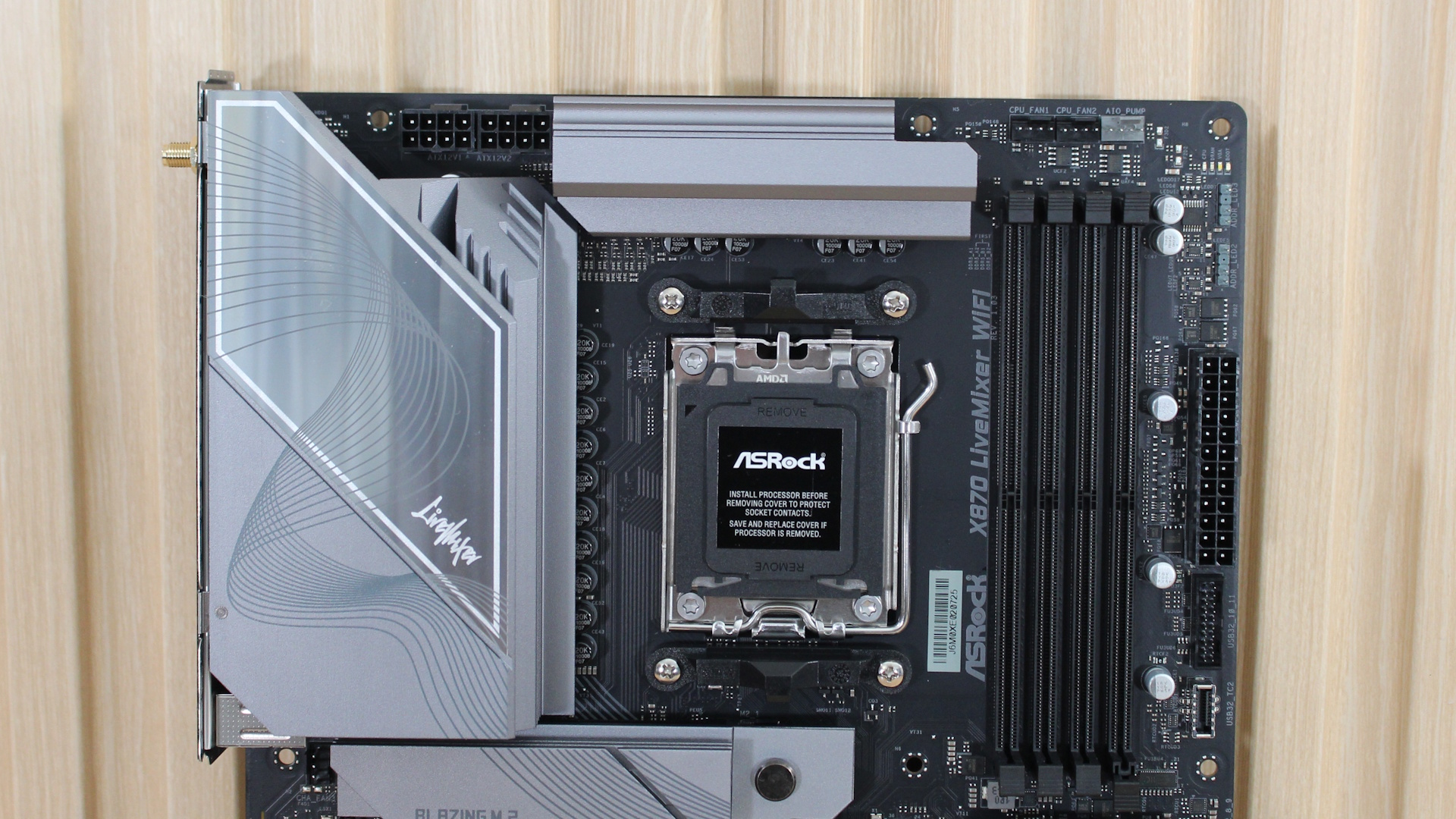
Starting with the top half, in the upper-left corner, are two 8-pin EPS power connectors (one required) to power the processor. Surrounding them are two “XXL” VRM heatsinks that do a good job of keeping the power delivery components within specification. On top, it’s a two-tone silver/grey with the LiveMixer branding written in small letters.
Moving past the CPU socket to the right, the next thing we see are three 4-pin fan headers (in this case, CPU_FAN1/2 and AIO_PUMP). Each header supports PWM- and DC-controlled devices. Output varies among them: The CPU_FAN2, Chassis, and AIO_PUMP headers deliver up to 3A/36W, and the CPU_FAN1 header delivers 1A/12W. There’s plenty of power to go around for fans, AIOs, or even a custom loop.
Next are the four DRAM slots (not reinforced) with locking mechanisms on both sides. ASRock lists support for up to DDR5-8000, which is plenty fast for the platform. We again had some trouble with our default Kingston test kit on this board, but the others worked fine. I’m not sure why this specific kit doesn’t want to play nice with so many ASRock boards lately, even though it’s on the company’s QVL, but that has been a theme with these new boards.
Making our way down the right edge, we find the 4-LED POST Status Checker, which lights up during the POST process. If your system hangs in one of the four areas (CPU, Boot, DRAM, VGA), the corresponding LED remains lit, giving you a high-level idea where the problem lies. Next are two (of three) 3-pin ARGB headers for additional RGB lighting, a 24-pin ATX power connector for the motherboard, a front-panel 19-pin USB 3.2 Gen 1 (5 Gbps) header, and, finally, a front-panel USB 3.2 Gen 2x2 (20 Gbps) Type-C connector.
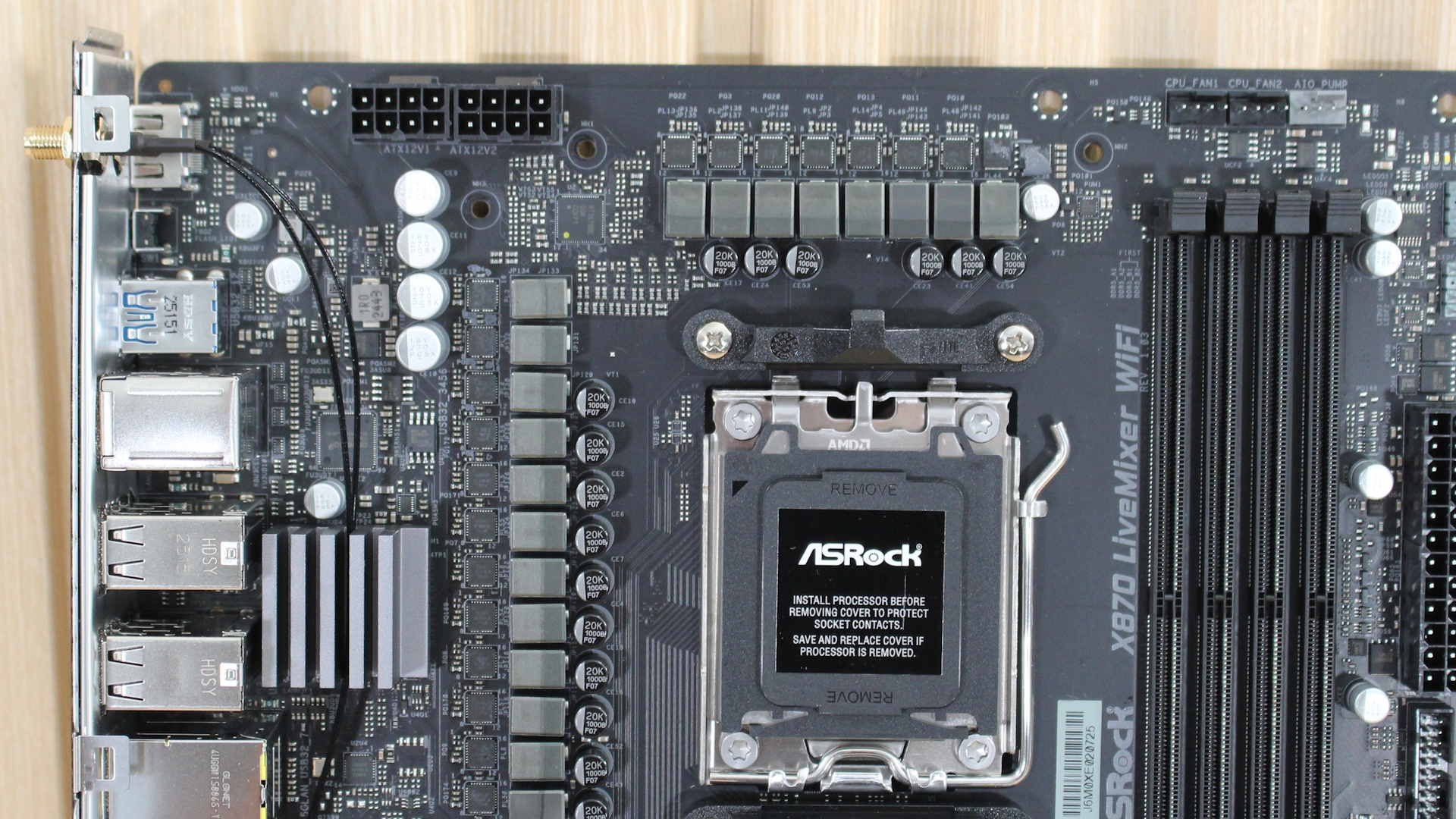
Power delivery consists of 19 phases, with 16 dedicated to Vcore. Power comes from the dual 8-pin EPS connectors to the Realtek RT3678BE dual-channel PWM controller. From there, it hits the Vishay Sic661 MOSFET, which ASRock lists at 80A. The 1,280A available to the processor is plenty to handle a Ryzen 9 9950X3D, even with PBO enabled.
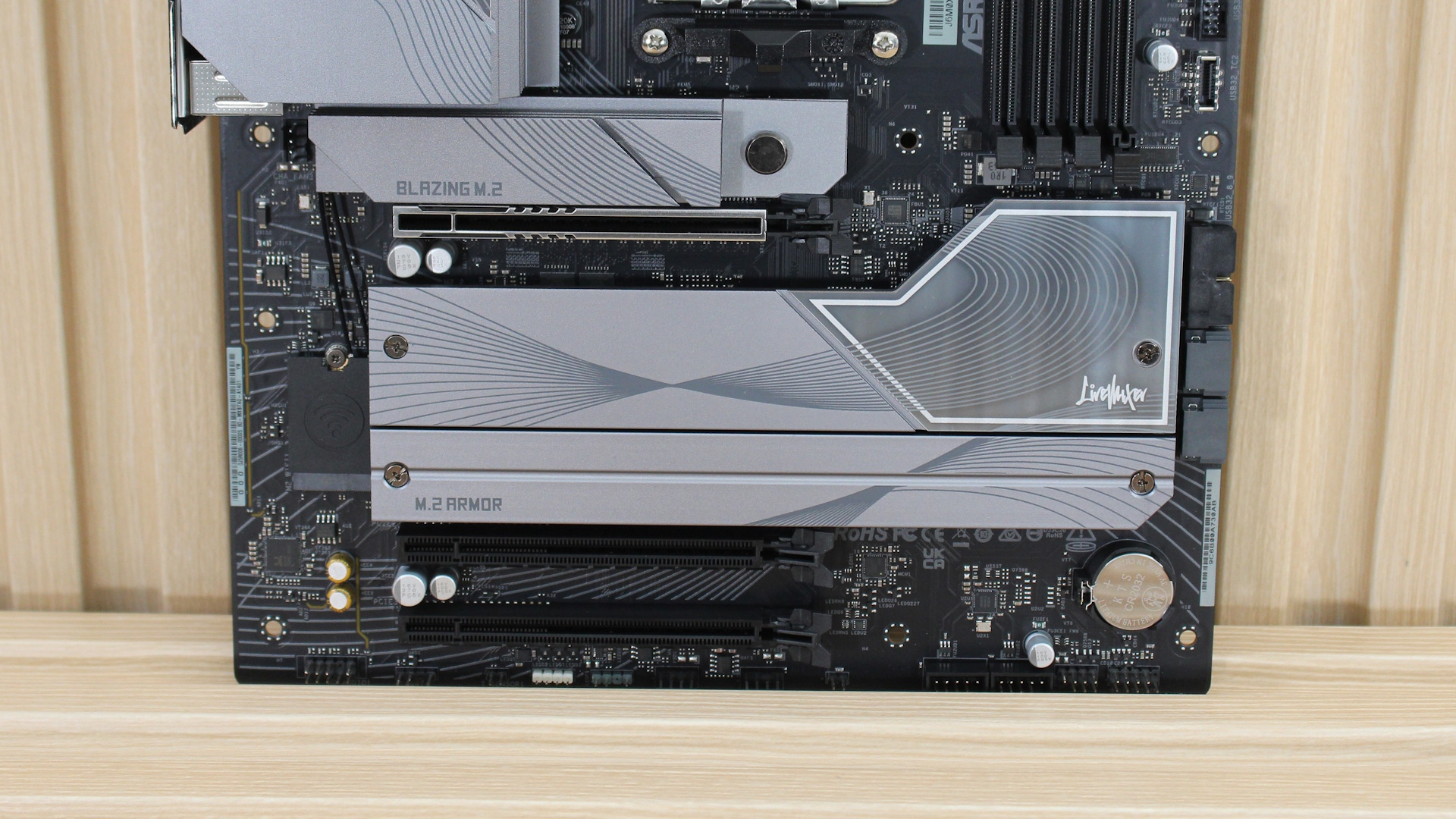
At the bottom of the board, starting from the left and hidden under heatsinks and shrouds, is the audio solution. Here we spy the flagship Realtek ALC4082 codec, some dedicated audio capacitors, and an ESS ES9219 Quad DAC/Amp. It’s arguably the best integrated solution for this generation and chipset and perhaps a bit surprising to see on a budget board.
In the middle of the board are two full-length PCIe slots, each of which connects directly to the CPU. The top slot, using the updated PCIe Slot Q-Release function, supports speeds of up to PCIe 5.0 x16, while the bottom slot has a maximum speed of PCIe 5.0 x8. There is considerable lane sharing between the PCIe slots and M.2 sockets, though.
When M.2_2 is enabled and M.2_3 is disabled, PCIEX16_1 will run in x8 mode, and PCIEX16_2 will be disabled. When M.2_3 is enabled but M.2_2 is not in use, PCIEX16_1 will operate in x8 mode, and PCIEX16_2 will operate in x4 mode. If both M.2_2/3 are enabled, PCIEX16_1 will run at x8 mode and PCIEX16_2 will be disabled. In other words, if you plan on using the second and third PCIe 5.0 M. 2s, you will sacrifice PCIe slot bandwidth. We would have liked to see the M.2 Q-Release feature on this heatsink as well. As it stands, you have to use tools to access M.2_2/3 (and remove the GPU).
Speaking of M.2 sockets, we find three in the middle of the board: one above the top PCIe slot, under the large heatsink, and the others under the large plate heatsink. The topmost slot, M.2_1, connects directly to the CPU and is the only PCIe 5.0 x4 (128 Gbps) socket that will not affect any other components. It supports devices up to 110mm in size (as does M.2_3). M.2_2 holds 80mm modules. Asus lists RAID 0/1/5/10 support with 9000 series processors.
At the right edge, again hidden under shrouds and connected horizontally, is an 8-pin supplemental board power, a 19-pin USB 3.2 Gen 1 (5 Gbps) header, four SATA ports, another 19-pin USB 3.2 Gen 1 connector, and finally, two more 4-pin fan headers (rad fan).
Along the bottom edge is a range of connectivity and functionality, some of which you don’t usually see. From left to right are the front panel audio BCLK +/- buttons, LN2 Mode jumper, 2-pin thermistor header, and two 3-pin ARGB headers. Next to that are several switches helpful for extreme overclocking, including Pause, Slow Mode, a BIOS Switch, and a PCIe Mode switch. The latter two also have LEDs to display the current mode/BIOS. Next to that is a USB 2.0 header, the SlimSAS connector, the CMOS battery, and another USB 2.0 header. Then there’s the V-Latch switch, Retry and Safe Boot buttons, 4-pin water pump header, and finally, the front panel header.
- Front Panel audio
- 3-pin UART connector
- 2-pin Thermistor header
- 4-pin RGB, 3-pin ARGB headers
- (2) 4-pin Chassis Fan headers
- 2-pin Clear CMOS
- (2) USB 2.0 headers
- Power/LED/Speaker
- Front Panel
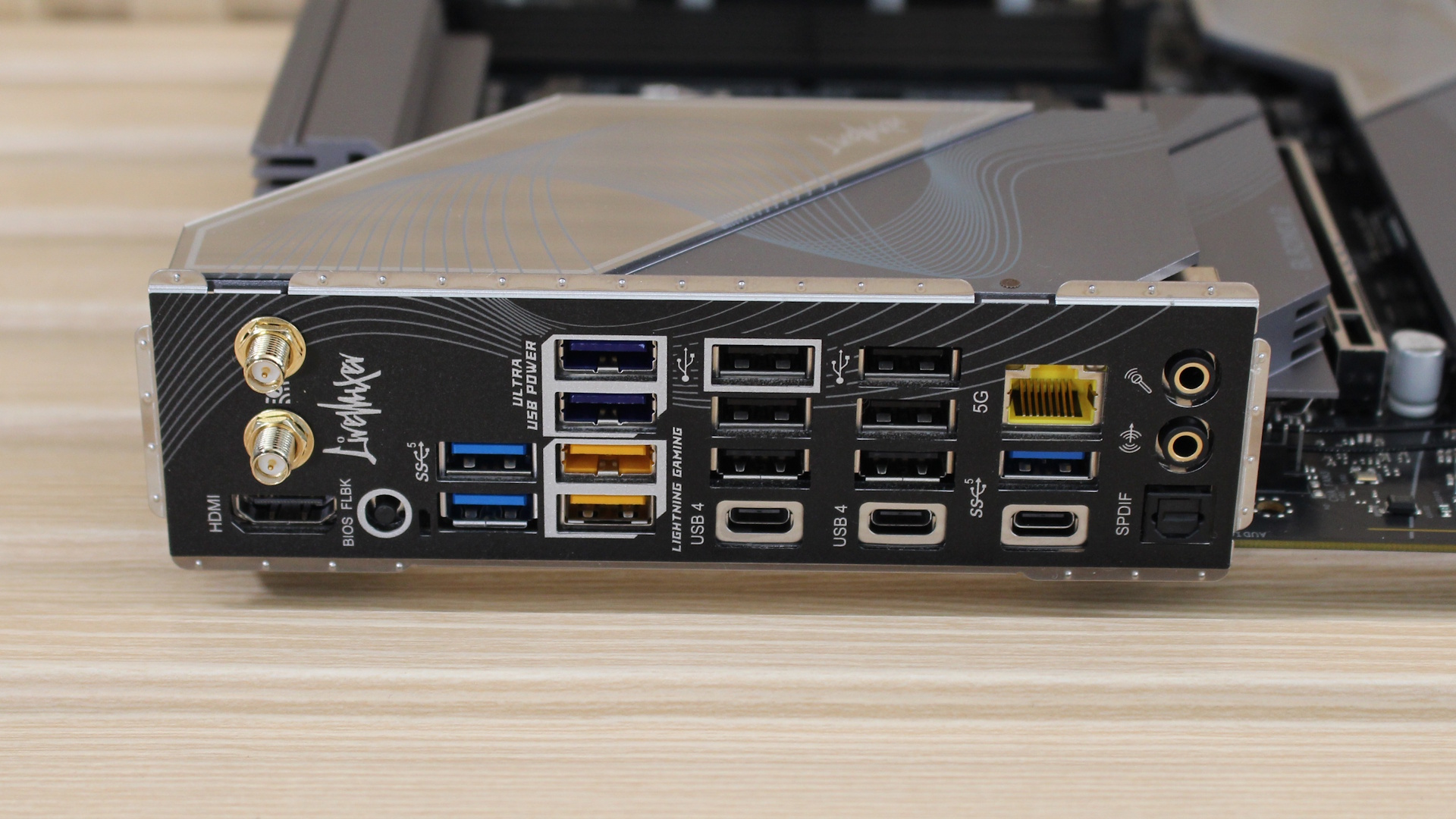
As you may have already guessed, the rear IO has a lot going on. To start, throw your USB hub away; there are 16 USB ports here (you can have up to 25 with all headers attached). Three Type-C and 13 Type-A dominate the real estate. In yellow are ASRock’s Lightning USB ports that are on their own controller and reportedly offer less latency and jitter (for whatever that is actually worth to the average gamer). On the left are standard Wi-Fi antenna connections and an HDMI port, while next to that is a simple BIOS Flashback button that you may be able to use to drop an AM6-based chip in when they arrive. On the right is the Realtek 5 GbE jack, and finally, the audio stack with SPDIF and two 3.5mm jacks for line out and microphone.
MORE: Best Motherboards
MORE: How To Choose A Motherboard
MORE: All Motherboard Content

 3 weeks ago
13
3 weeks ago
13
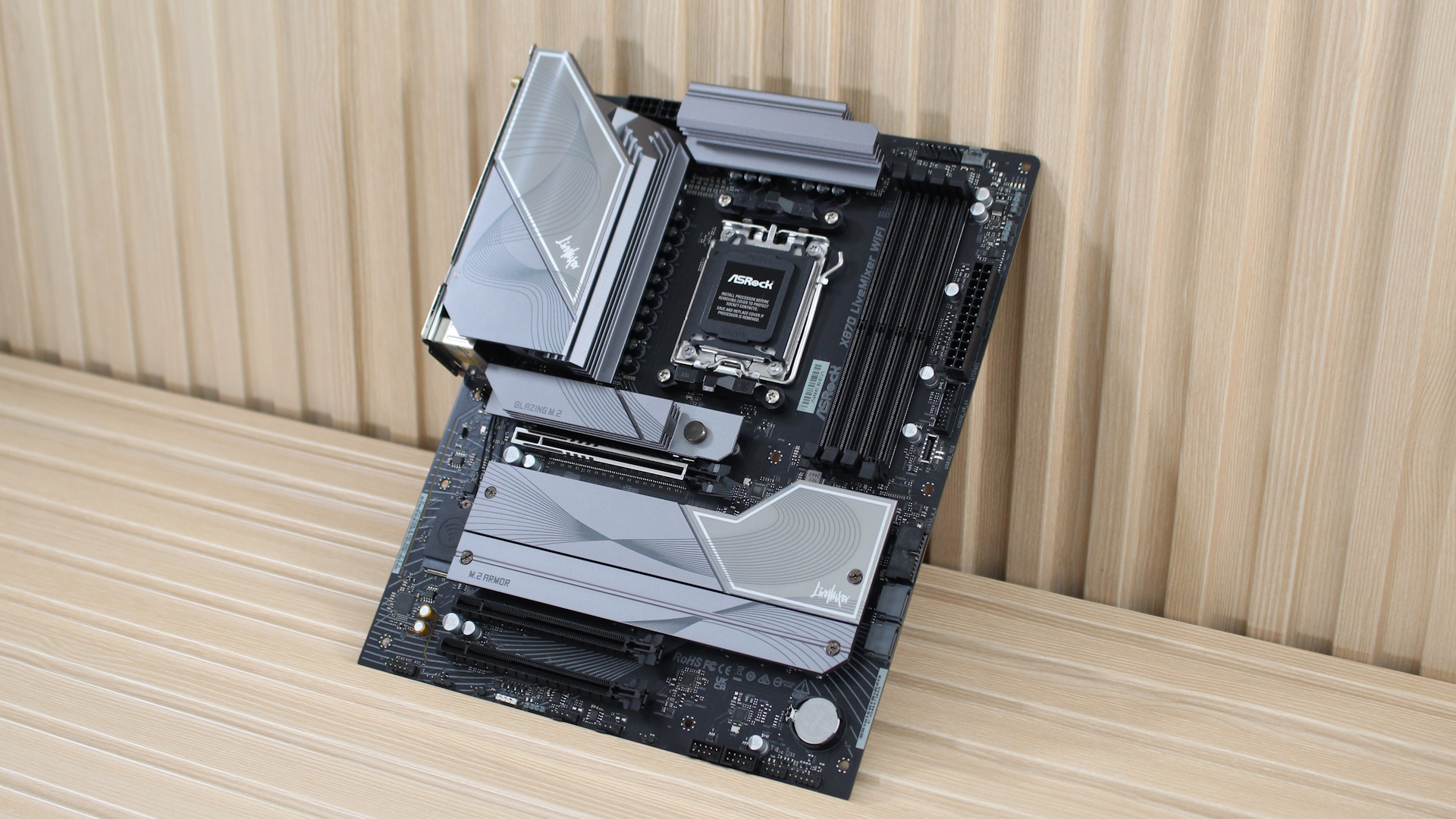
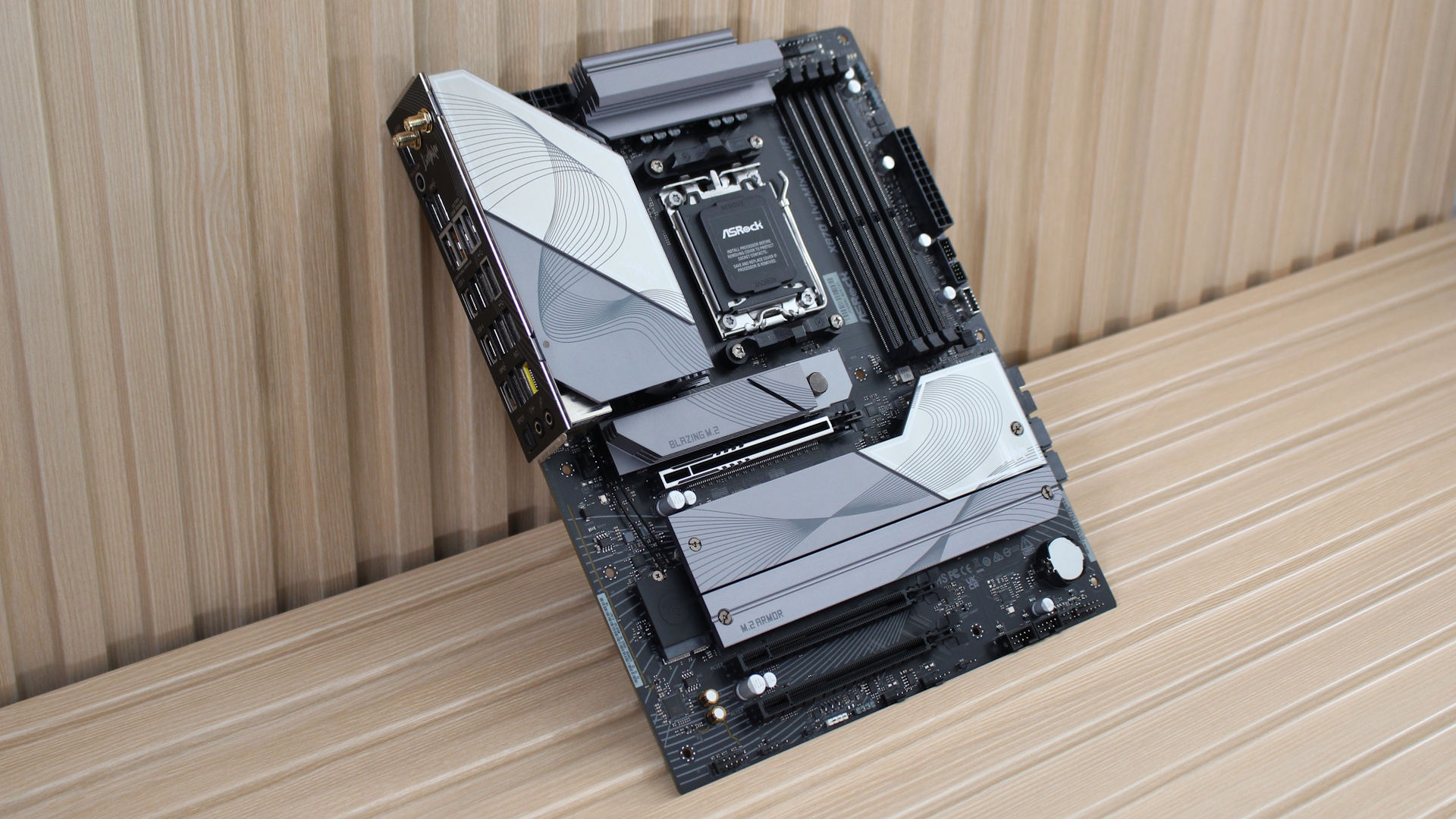



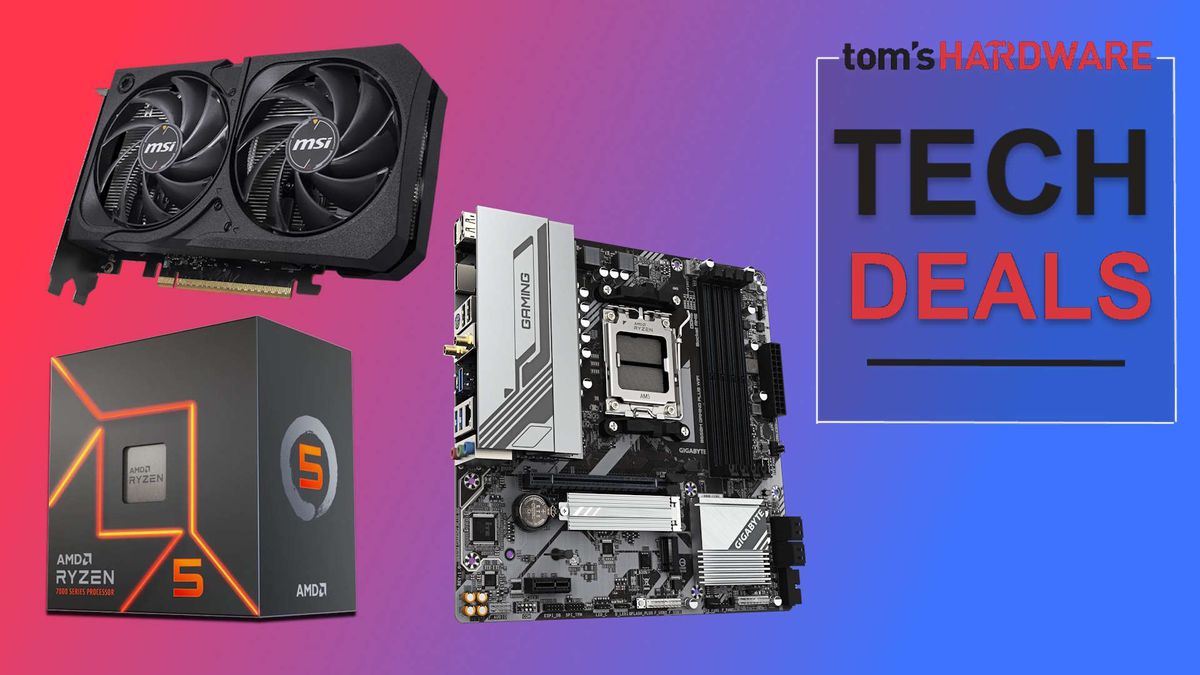




 English (US) ·
English (US) ·